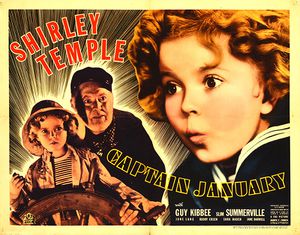What is the History of Movie Posters
Movie posters often become the iconic way in which we remember movies or become symbols for major movie releases. But what is the history of movie posters and why did people start using them? It is clear that movie posters have developed with the movie industry and movie posters were there from beginning of cinematic history.
Contents
[hide]Early History of Posters
The first clear movie poster was made by Marcellin Auzolle for the Louis Lumière film L'Arroseur Arrosé, or the Sprinkler Sprinkled, which was a comedy that debuted in Paris in 1895. That film is famous for being also the first featured comedy. There were earlier posters used for films, but these were mostly descriptive or discussed the type of cinematography rather than promoting the film itself. The poster shows the audience looking at the film, with one of the scenes in the film displayed (a gardener being splashed by water; Figure ). The film's surprising focus on comedy, where up to that point most films were closer to documentaries, surprised audiences, making it a major hit and soon launched the genre of comedy. The first major American film, which was only 12 minutes long, to utilize a poster was The Great Train Robbery. The film was a great success, as it was the first true Western and its sequence of action thrilled audiences, signaling a new direction for films. The posters were basic, however, and mainly showed some of the cast and a train. Interestingly, none of these early posters, including The Great Train Robbery, indicated the actors' names. It was Thomas Edison though who began to standardize the size of posters used for promotion, with his company printing 27”x41” poster sizes. Early movies were becoming increasing hits in the 1900s, as audiences demanded more. However, none of the movies promoted their actors. It was only from about 1910 that studios began to use actors' names in promotion, and that was only after people started mailing the studios and demanding that certain actors play in movies or even asking for the actors' names. Studios soon realized that promoting actors on film posters, and not just the film, could help with making the film more popular and profitable. Soon, posters began to prominently display actors' names. This also helped actors to demand greater pay and helped them to increase their leverage in movies. Producers also began to experiment with stills or showing stills from a movie using so-called lobby cards, which were 8”x10” and showed scenes meant to attract audiences. With the increasing popularity of start like Charlie Chaplin, the 1910s saw greater use of actors on posters. In fact, now posters began to simply show famous actors, including actresses, rather than even show any scene in the movie.
Later Developments
The increasing popularity of actors (and actresses) led to more posters being used to promote movies simply by focusing on these individuals. The so-called golden age of the silent film saw movie theaters converted into prominent venues around towns and producers began to redo their posters into portraits that would show often only leading actors/actresses. Unfortunately in the United States many artists did not provide their signatures in these posters, while in Europe there is now a well recorded history and acknowledgment of key artists who helped to make movies more popular during this time. After the advent of radio in 1926, audiences began to demand movies also use sound. Up to that point, sound was sparingly used, mostly dubbed in at particular points such as music or a few key lines. However, once again it was audiences that pushed the use of new ideas, such as sound, and this led to increasing revenues for movie theaters and producers. Although the World was facing a Great Depression in the 1930s, sound helped to make this period known as the “Golden Age of Movies.” Posters began to become more colorful, vivid, and use of more varied shapes that helped to promote movies. The three major studies, Paramount, MGM, and Universal Pictures, starting developing multiple types of posters to promote movies. These were called “Style A” and “Style B” for Paramount, MGM was “Style C” or “Style D”, and Universal Pictures were known as “Style X” and “Style Y.” Actors and actresses were still prominently displayed on posters, although they were sometimes mixed in with key scenes or actions in a movie in how they were depicted. The names of actors and actresses were still very much prominent on posters, which helped to continue to draw in audiences at record levels (Figure 2). From the late 1940s and into the 1950s, television increasingly kept audiences home. This led to movies focusing more on epic productions or certain action movies that often differed from television. Posters increasingly emphasized the epic nature of films or perhaps the unique or strange characteristics of movies that made them differ from television. Movies now had to use posters as a way to fight off the threat from television. As the baby boom generation came of age, teen movies became a new genre and action movies became more common. Posters now increasingly used sexuality as a way to bring in audiences as well as putting prominent teen idols, such as Elvis Presley, in movies to keep the uniqueness of movies.

